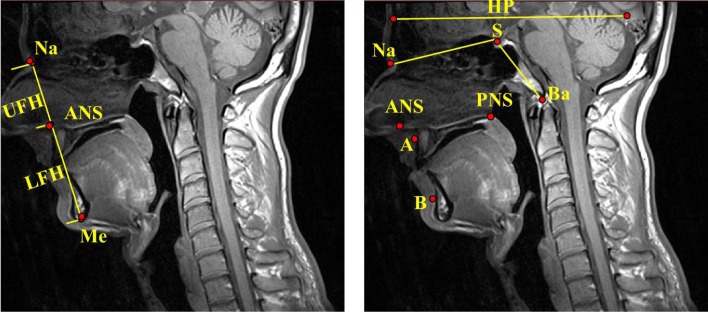Figure 2.
Craniofacial heights and angles. A, subspinale; ANS, anterior nasal spine; B, supramentale; Ba, basion; HP, horizontal plane; LFH, lower facial height; Me, menton; Na, nasion; PNS, posterior nasal spine; S, sella; UFH, upper facial height. Left panel: UFH: the distance between Na to ANS. LFH: the distance between ANS to Me. Right panel: SNA angle (S–Na–A) evaluates the relative anteroposterior position of the maxilla to the cranial base. SNB angle (S–Na–B) evaluates the relative antero-posterior position of the mandible to the cranial base and the ANB angle (A–Na–B) the difference between SNA and SNB angle, assessed the anteroposterior relationship between the maxilla and the mandible. Saddle angle (Na–S–Ba): angulation of the cranial base plus indirect determination of the position of the glenoid fossa (depression in the temporal bone where the condyle of the mandible articulates to form the temporomandibular joint). Palatal plane to anterior cranial base angle: angulation of the palatal plane (ANS–PNS) in reference to the anterior cranial base (S–Na). Anterior cranial base to horizontal plane: angulation of the anterior cranial base (S–Na) and the true horizontal plane.

